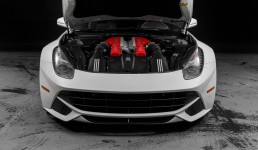The most expensive module of the car is not the engine, it’s the electronics. This might come as a surprise to many, but more than 30% of car costs go directly to the electronic parts. There are somewhere between 80-160 microcomputers (ECUs) onboard of the car, and they all need a reliable connection in between. This results in more than 20 meters of cabling all over the automobile, and added to that, cars have dozens of sensors—all of which create extra costs in car production.
With cars becoming increasingly connected and data-driven, in-car electronics systems only get pricier, getting closer to the 40% margin of the cost. These factors generate a growing demand to find cost-efficient solutions, in order to make next-generation features, like level-3 autonomous functionality, affordable for the average consumer.
The core requirement for cutting the costs is to fundamentally change how electronics purchasing happens within the industry. The common process is to go “hardware-first”, meaning that the electronics elements of the car are determined initially, and only afterward, software options are evaluated.
To achieve a better result-per-buck, car manufacturers must rethink this process, as in many cases it is the software stack of the architecture that determines the end performance of the system. That doesn’t mean that car manufacturers need to go all-in with the software-defined approach just yet. But it does create a requirement for OEMs and Tier-1s to lead the change and to evaluate both software and hardware right from the beginning of the electronics architecture design.
A combined approach to electronics architecture design brings multiple benefits, such as:
- Lower requirements for the hardware
- A more robust long-term performance of the system
- Possibility to integrate hypervisors and to consolidate ECUs
Such improvements directly affect the end cost of the car electronics, but also ensure automotive-grade reliability for the whole system, as all elements of the hardware and software architecture are developed more in sync.
A good example is the storage infrastructure of autonomous vehicles, where computer vision sensors, such as LIDARs and cameras, can generate up to 11 TB of raw data in just one day. This makes the “black box” architecture of the car an increasingly important part of the production vehicle design. If going with a hardware-first approach, choosing H265-codec compatible hardware might be a slightly more expensive decision and may be overseen, but it cuts the recorded end-size video files by half. This results in substantial savings in edge storage needs for the car. Something like this might seem obvious when looking from the bigger picture, but if approached without the whole software and hardware architecture in mind, could be easily missed—resulting in increased costs of the car electronics.
Optimizing software for hardware
To achieve even better performance for the use case, the software stack of the architecture must be optimized to ensure that it uses hardware at its maximal potential. For example, here at Tuxera, we do enhancements between the flash storage of the car and the storage software (file system), optimizing the whole storage stack for a specific use case. This allows us to prolong the lifetime of flash memory, while maintaining a sustained level of high performance for the storage. In some cases, lifetime optimizations can reduce the long-term storage costs by up to half, while the performance increases allow for more affordable solutions in the storage infrastructure blueprint.
Similar optimizations can be applied for multiple elements of the car, bringing improvements to overall performance and stability of the system, and providing extra opportunities for costs consolidation.
Achieving such optimizations and software improvements can be quite a manual task, as it requires a lot of hands-on testing in the process. Despite being a large investment in the development phase, in-depth optimizations, software improvements, and fine testing create a software-hardware architecture that takes advantage of the scaling and saves in the end costs for each production vehicle.
Final Thoughts
Including software in the initial architecture design will lead the way for efficient automotive electronics, making room for more affordable connected cars. However, in the long-run, consolidation will be predominantly software-defined. The reason is simple. The future of transportation lies in data-driven and autonomous vehicles, and it is the software stack that sets the requirements in such use cases.
Car makers need to embrace this change on all aspects of the car design and should actively follow and implement the latest software developments, as only then highly intelligent autonomous vehicles will get to market at a consumer-friendly price.
Car makers and Tier-1 suppliers, discover how we can help you save on BOM costs.


